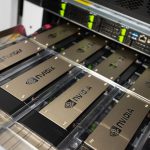Artificial Intelligence (AI) models have evolved rapidly, transforming industries with their ability to automate tasks, provide insights, and enhance decision-making. However, the journey from an AI prototype to a fully scaled production system is challenging. Companies often struggle with scalability, infrastructure, model optimization, and deployment strategies. This article explores the essential steps, challenges, and best practices for scaling AI models from development to enterprise-level deployment.
1. Understanding the AI Development Lifecycle 🛠️
Before scaling, it is crucial to understand the AI model development cycle:
- Problem Identification 🎯 – Define the problem your AI model aims to solve.
- Data Collection & Preprocessing 📊 – Gather, clean, and structure data for training.
- Model Development 🤖 – Choose algorithms, train the model, and evaluate performance.
- Testing & Validation ✅ – Ensure accuracy using test datasets and validation techniques.
- Deployment & Scaling 🚀 – Move the model from development to production while ensuring scalability.
Scaling AI models is primarily concerned with step five, where operational efficiency and infrastructure play a significant role.
2. Challenges in Scaling AI Models ⚠️
Scaling AI systems is not just about increasing computational power. It involves overcoming multiple challenges, such as:
- Data Management Issues 📂 – Managing large datasets efficiently while ensuring quality and consistency.
- Computational Cost 💰 – AI models, especially deep learning, require high GPU/TPU resources, increasing costs.
- Latency & Performance 🚀 – Ensuring that the model delivers real-time responses for end-users.
- Model Drift & Retraining 🔄 – AI models can become outdated as data patterns change, requiring continuous updates.
- Security & Compliance 🔒 – Adhering to regulations (GDPR, HIPAA) and securing sensitive AI data.
Addressing these challenges is key to achieving successful AI scalability.
3. Strategies for Scaling AI Models 📈
A. Infrastructure Optimization ⚙️
-
Cloud vs. On-Premise Deployment ☁️
- Cloud Platforms (AWS, Azure, GCP) provide scalable resources, allowing companies to expand AI models dynamically.
- On-Premise is useful for organizations needing more control over security and compliance.
-
Containerization & Orchestration 📦
- Using Docker for containerization helps in deploying models across multiple environments.
- Kubernetes (K8s) automates deployment, scaling, and management of AI applications.
-
Hardware Acceleration 🚀
- GPUs & TPUs enhance processing power for deep learning models.
- FPGAs offer high efficiency for specialized AI tasks.
B. Model Optimization 🏋️♂️
- Model Compression – Techniques like pruning, quantization, and knowledge distillation reduce the size of models without sacrificing accuracy.
- Efficient Architectures – Choosing lightweight models like MobileNet, EfficientNet, and transformers with fewer parameters helps in optimizing performance.
- Batch Processing & Parallelism – Leveraging batch inference and distributed computing accelerates AI workflows.
C. Automated MLOps & Continuous Deployment 🔄
- CI/CD for AI Models – Implementing Continuous Integration and Deployment (CI/CD) pipelines ensures smooth transitions from development to production.
- Model Monitoring & Retraining – Tools like TensorFlow Extended (TFX), MLflow, and Kubeflow automate monitoring and retraining AI models.
- Feature Stores – Storing and managing feature sets for AI models streamlines data consistency across environments.
D. Scalable APIs & Microservices 🌐
- Exposing AI models as RESTful APIs or GraphQL APIs allows easy integration into applications.
- Microservices architecture enables independent scaling of AI components.
4. Case Studies: Companies Successfully Scaling AI 🏢
Google Search & AI Scaling 🔎
Google scales AI by deploying TPUs and implementing efficient transformer-based models like BERT and MUM to process billions of search queries daily.
Netflix: AI-Powered Content Recommendations 🎥
Netflix optimizes AI scalability using AWS cloud computing, parallel processing, and personalized deep learning models to enhance user recommendations.
Tesla: Self-Driving AI 🚗
Tesla’s autonomous driving AI leverages edge computing, neural networks, and over-the-air updates to improve model accuracy and scale to millions of vehicles.
5. Future Trends in AI Scaling 🔮
- Edge AI – Running AI models on edge devices like smartphones, IoT devices, and drones for low-latency inference.
- Federated Learning – Training AI models across decentralized data sources without sharing raw data, enhancing privacy.
- Serverless AI – Using event-driven, serverless architectures (AWS Lambda, Google Cloud Functions) for cost-efficient AI deployment.
- Hyperparameter Tuning with AutoML – Automating model selection and optimization to reduce human intervention.
Conclusion 🏁
Scaling AI models from prototypes to production requires a combination of optimized infrastructure, model efficiency, automated deployment, and continuous monitoring. By implementing the right strategies—cloud computing, hardware acceleration, microservices, and MLOps—businesses can ensure AI models remain efficient, cost-effective, and adaptable to real-world applications. As AI technology advances, the ability to scale models seamlessly will be a crucial factor in gaining a competitive edge in the market.
🔹 Key Takeaways:
✅ Infrastructure optimization (cloud, GPUs, Kubernetes) is crucial.
✅ Model optimization (pruning, quantization) improves efficiency.
✅ MLOps and automation ensure continuous monitoring and retraining.
✅ Future trends include Edge AI, federated learning, and AutoML.
🚀 AI scalability is the key to unlocking its full potential in production environments!


